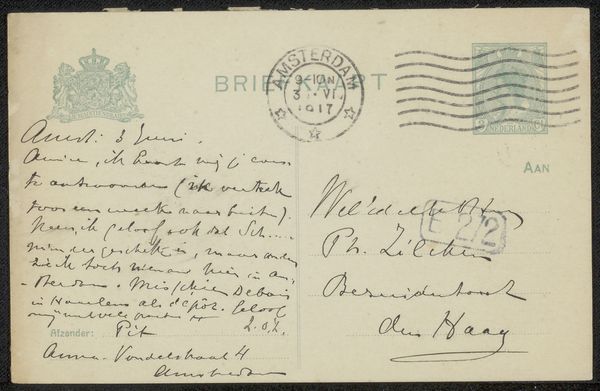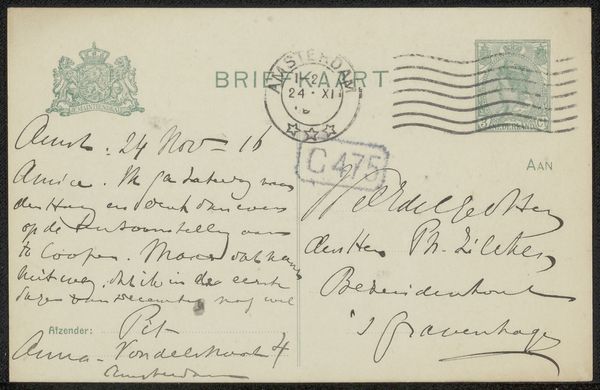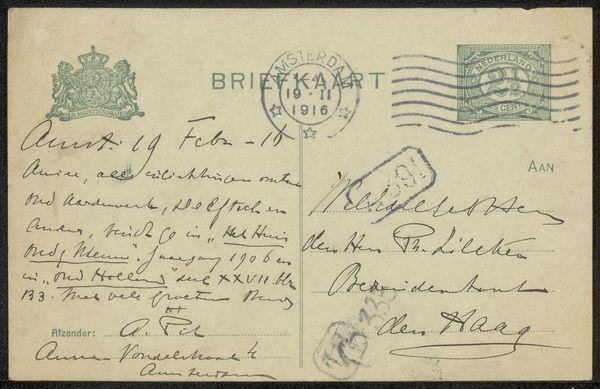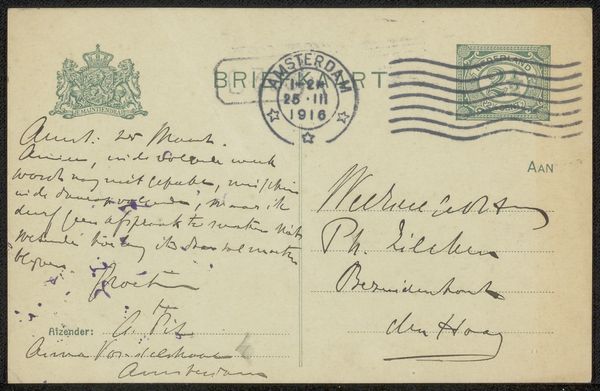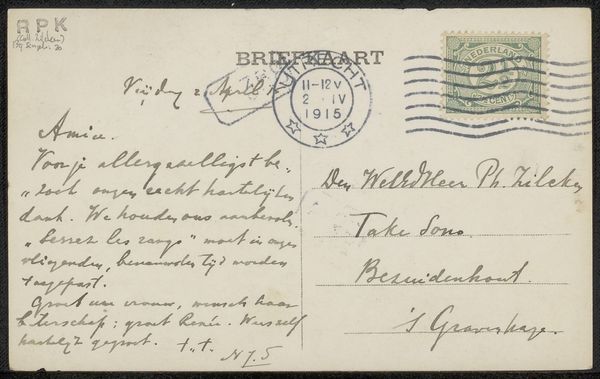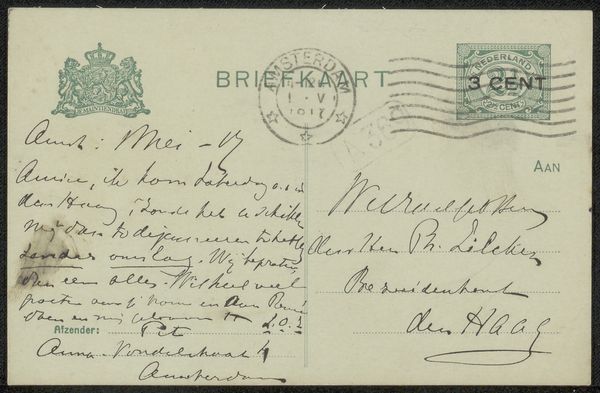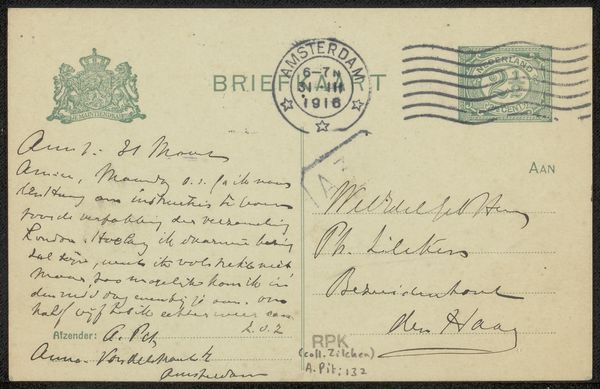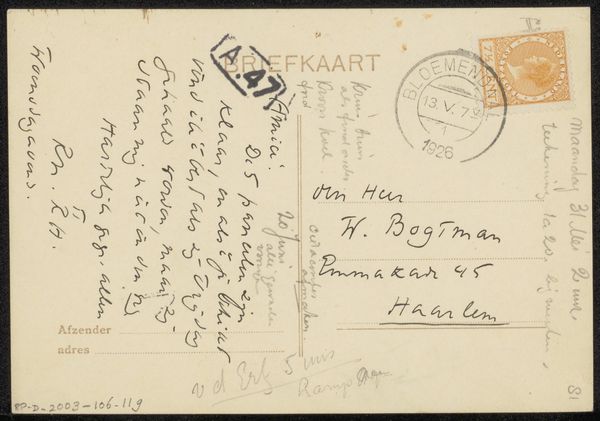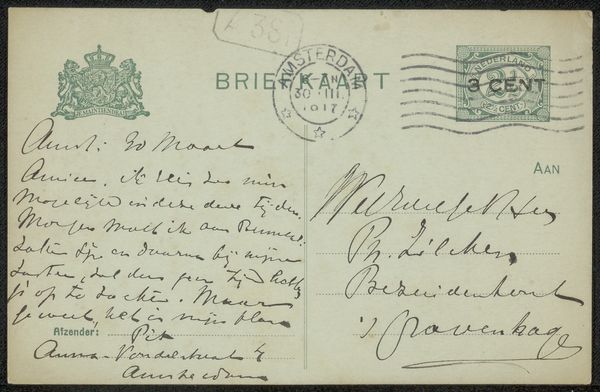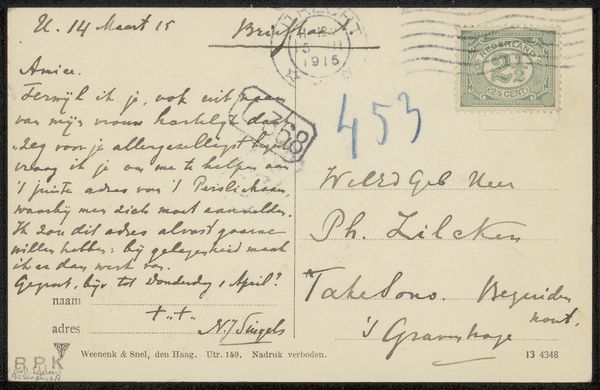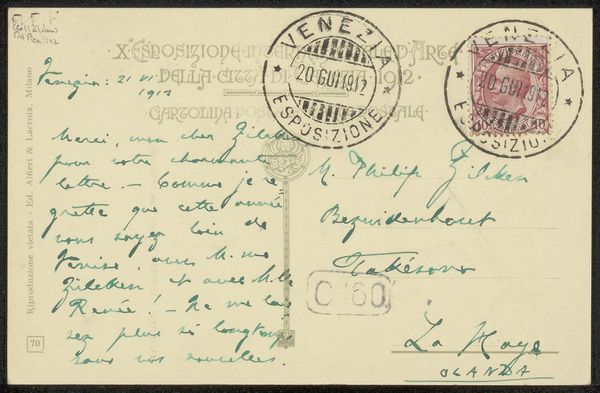
drawing, paper, ink, pen
#
drawing
#
hand-lettering
#
hand drawn type
#
hand lettering
#
paper
#
personal sketchbook
#
ink
#
hand-drawn typeface
#
pen-ink sketch
#
pen work
#
sketchbook drawing
#
pen
#
storyboard and sketchbook work
#
sketchbook art
#
calligraphy
Copyright: Rijks Museum: Open Domain
Curator: Let’s turn our attention to "Briefkaart aan Philip Zilcken," a postcard possibly from 1915, created by Adriaan Pit. It's rendered in pen and ink on paper and is held at the Rijksmuseum. What's your initial take? Editor: It feels incredibly intimate. Like holding a secret. The script is so personal; you can almost hear the writer’s voice, though it looks rushed as if written in fleeting moments. Curator: Absolutely. And it speaks volumes about the era. Postcards were essential for communication, binding individuals amidst socio-political tensions of the time. There’s an immediate connection through the hand-lettering style, showcasing an era where personalized writing was the norm. Editor: Looking at it closely, I see the symbols more clearly: the postmark with what appears to be a royal emblem, and the stamp of the Netherlands in the upper right. Even the cancellation marks seem to form shapes with intent. These little images offer a sense of state, authority, and everyday transactions merging together. Curator: True. Postmarks, like coats of arms, functioned as signifiers of nation-state identities at the time, even down to the personal letters individuals sent to each other. This highlights the intricate relationships between personhood and politics within the ordinary act of letter-writing. And it seems to have the sender and recipient's address. It also makes you think about their connection with this location during turbulent times. Editor: Right! And the handwritten address, the stamp… They function as talismans that carried emotional weight across distance. Each curve of the script reflects this almost palpable emotional context of the past. Curator: The level of intentionality behind even mundane correspondences like this opens a window into how individuals negotiated and expressed identity, gender, or race, whether consciously or not. The recipient, the Dutch painter Philip Zilcken, surely experienced this card on an individual basis; he could analyze his social identity and positioning through its careful construction. Editor: Ultimately, looking at something like this makes you think of what a privilege it is to peek into a message imbued with cultural meanings— something shared across the chasms of time. Curator: It truly underscores the point that ordinary documents are invaluable mirrors that are deeply representative of everyday lives and the sociopolitical context of an era.
Comments
No comments
Be the first to comment and join the conversation on the ultimate creative platform.
